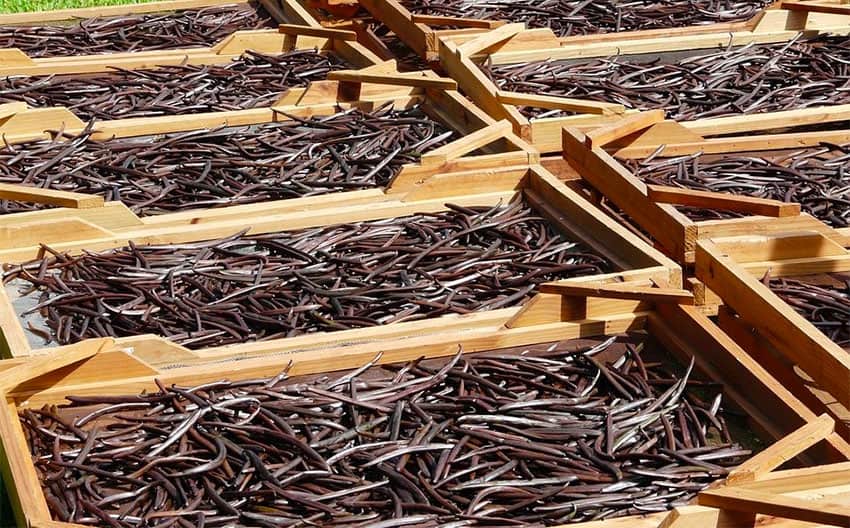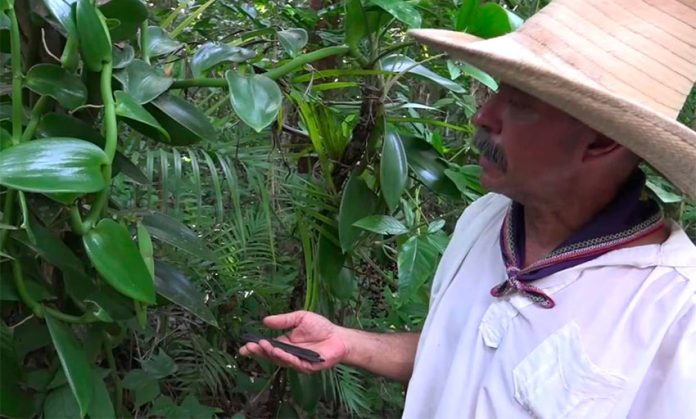It’s a good and bad time to be a vanilla grower in Veracruz.
Mexican vanilla is currently selling for about 10,000 pesos (US $530) a kilo due to rising demand and poor weather in other countries – mainly Madagascar – that produce the world’s second most expensive spice after saffron.
However, for vanilla growers in Papantla – a city that has been known as “the vanilla capital” and which once upon a time was dubbed “the city that perfumes the world” – the potential reward doesn’t come without considerable risk that the lucrative crop will be targeted by thieves.
Óscar Ramírez, founder of a local vanilla growers’ association, took a reporter from the United States’ National Public Radio up a steep mountain path in Papantla to an isolated location where the crop is grown and dried.
“It’s hidden, it’s in the middle of nowhere, we have to have [the crop] here” to avoid theft, he said. The 29-year-old said he doesn’t know a single vanilla grower who hasn’t been a victim of crime.

Organized crime groups, many of which have diversified into the trafficking of things like stolen fuel and avocados, particularly target vanilla pods that have already been cut from the vine and are drying in the open.
The risk of theft, and other factors including climate change and the loss of tropical forests, have led to a 90% reduction in vanilla production in the hills of Papantla over the past 50 years.
Ramírez told NPR that he was concerned that Mexican vanilla could soon become extinct, explaining that young farmers prefer to grow crops that are faster and less risky.
Héctor Canales Villa, an orange grower and friend of Ramírez, explained that he can harvest more than once a year whereas a vanilla orchid blossoms just one day a year. In addition, vanilla has to be hand pollinated because bee populations have long been in decline in the area, pods take nine months to fully mature and drying them can take up to two more months.
Adolfo San Martín García, a 62-year-old Totonacan man, recalled that vanilla used to be dried in the central square of Papantla, located about 240 kilometers north of the port city of Veracruz.
“It was a joy to see it,” he told NPR, explaining that he used to help his grandfather with his crop as a boy in the late 1960s.
However, San Martín said that he gave up growing vanilla as a teenager because it was such hard work. Wearing traditional indigenous costume, he now makes a living performing for tourists who visit the pretty town that is also well known for its version of an ancient Mesoamerican pole-flying ceremony.
Vanilla, one of 16 Mexican products that enjoy denomination of origin protection, was used by the Totonacans in pre-Hispanic times to pay tribute to the Aztecs, who used it to flavor their hot chocolate.
In the early 16th century, the Aztecs — or Mexicas as they were known at the time — even served the drink to Spanish conquistador Hernán Cortés, who after conquering the ancient city of Tenochtitlán took a range of native products back to Spain including the vanilla plant.
Source: NPR (en)
